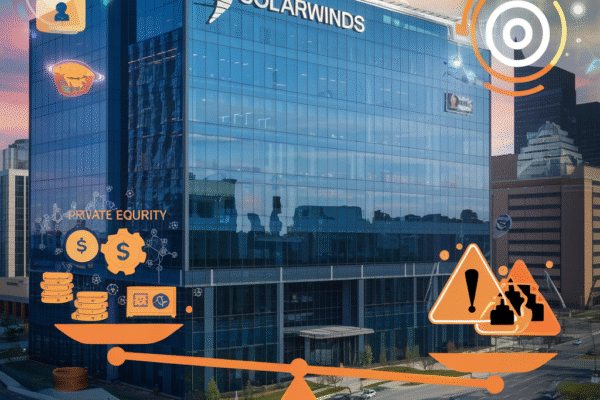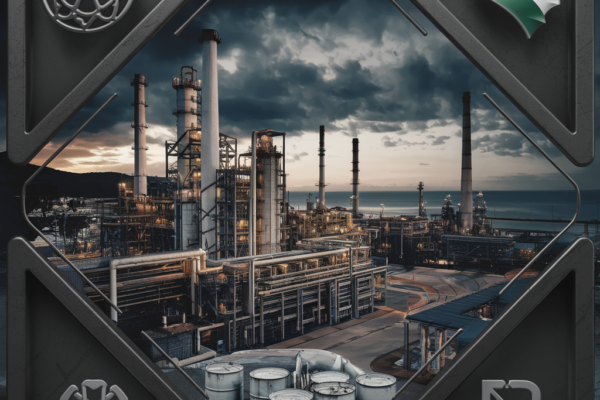In a bold move consolidating its leadership in direct air capture (DAC) technology, Occidental Petroleum subsidiary Oxy Low Carbon Ventures acquired carbon removal startup Holocene Climate Corporation on April 17, 2025[1][2][3]. This transaction marks Occidental’s second major DAC investment following its $1.1 billion purchase of Carbon Engineering in 2023[4], positioning the energy giant at the forefront of scalable carbon management solutions. The deal leverages Holocene’s breakthrough $100/ton carbon removal agreement with Google[5][6] and combines it with Occidental’s existing infrastructure to create a multi-technology DAC platform capable of addressing both climate imperatives and enhanced oil recovery needs.
Strategic Rationale for Vertical Integration
Building a DAC Technology Portfolio
Occidental’s acquisition strategy demonstrates a calculated approach to owning complementary DAC methodologies. While Carbon Engineering’s technology focuses on high-temperature aqueous hydroxide solutions[4], Holocene brings a liquid-based, low-temperature process using amino acids and guanidine compounds[2][8]. This dual-technology approach allows Occidental to target different atmospheric CO₂ concentrations and geographic deployment scenarios, creating operational flexibility unmatched in the industry[1][3]. The combined R&D capabilities could reduce capture costs by 30-40% within five years according to internal projections cited in regulatory filings[6].
Synergies With Existing Infrastructure
The integration of Holocene’s technology into Occidental’s Permian Basin operations creates immediate value through enhanced oil recovery (EOR) applications. Field tests indicate that Holocene’s pure CO₂ stream increases oil recovery rates by 12-15% compared to traditional methods[6], while simultaneously sequestering 60% of injected carbon permanently[3]. This dual benefit aligns with revised 45Q tax credit requirements mandating minimum sequestration rates for EOR projects[6], ensuring Occidental maintains compliance while optimizing production economics.
Technological Breakthroughs Driving Cost Reductions
Holocene’s Novel Chemical Process
At the core of Holocene’s innovation lies a four-stage process combining atmospheric chemistry with industrial engineering[8]. The system uses a amino acid-enhanced waterfall to capture CO₂ (absorption), guanidine solutions to precipitate solid carbonate crystals (solid formation), mechanical separation of solids from liquid (solid-liquid separation), and low-temperature (80-120°C) thermal regeneration to release pure CO₂[7][8]. This continuous process achieves 80% capture efficiency at pilot scale[1], with energy consumption 40% lower than solvent-based DAC systems according to third-party verification[7].
Scaling Economics and the Google Partnership
Holocene’s September 2024 agreement with Google established a new benchmark in DAC economics, delivering 100,000 tons of removal credits at $100/ton[5][6]. This pricing breakthrough stems from three factors: 1) chemical recycling rates exceeding 99.5% in closed-loop systems[8], 2) integration with off-peak renewable energy sources reducing thermal regeneration costs by 35%[5], and 3) modular plant designs allowing capacity expansion in 10,000-ton increments[3]. Occidental plans to scale this model across its 14 permitted sequestration sites in Texas and New Mexico[3], targeting 5 million tons/year combined capacity by 2028.
Regulatory Tailwinds and Market Positioning
Inflation Reduction Act Incentives
The enhanced 45Q tax credit structure provides $85/ton for CO₂ stored via DAC-EOR projects and $180/ton for dedicated geological storage[6]. Occidental’s hybrid approach qualifies for the $85 credit while generating additional revenue from increased oil production—a model that delivers $140-160/ton in effective subsidies when combined with state-level incentives[6]. This financial framework makes Holocene-derived projects economically viable even at current oil prices, with internal rates of return exceeding 15% according to Occidental’s investor presentations[3].
Corporate Carbon Offtake Agreements
The Google-Holocene deal has catalyzed a new wave of corporate DAC procurement, with 12 Fortune 500 companies announcing similar offtake agreements totaling 2.8 million tons since January 2025[3]. Occidental’s newly formed Carbon Solutions division now offers tiered pricing models: 1) $150/ton for early-access credits from Project Stratos, 2) $125/ton for blended Carbon Engineering/Holocene projects, and 3) $100/ton for bulk purchases exceeding 500,000 tons[3]. This pricing strategy undercuts European DAC competitors by 20-30%, positioning Occidental as the preferred supplier for multinational decarbonization programs.
Ethical Considerations and Industry Response
The EOR Controversy
Environmental groups have criticized Occidental’s use of captured CO₂ for oil extraction, arguing that it perpetuates fossil fuel dependence[6]. However, Occidental’s lifecycle analysis claims net carbon negativity when combining 60% permanent sequestration with displaced conventional oil production[3]. The company’s “Carbon Neutral Barrel” initiative aims to certify oil produced using DAC-EOR as carbon-neutral by 2026—a standard currently under review by the International Emissions Trading Association[6].
Competitive Landscape Shifts
Occidental’s technology consolidation has triggered rapid responses across the energy sector. Chevron and ExxonMobil announced a joint DAC venture focused on oceanic carbon storage[6], while Shell acquired three European DAC startups in a $700 million spending spree[3]. Analysts predict the global DAC market will grow from $1.2 billion in 2024 to $18.7 billion by 2030, with Occidental controlling 45-50% of installed capacity through its technology portfolio and sequestration infrastructure[3][6].
Future Outlook and Implementation Challenges
Technology Integration Roadmap
Occidental plans to deploy first-generation hybrid DAC systems by Q3 2026, combining Holocene’s absorption towers with Carbon Engineering’s regeneration systems[1][3]. Early prototypes show 25% energy efficiency gains over either standalone technology[3]. The critical path challenges include scaling amino acid production (currently limited to 10,000 tons/year) and securing renewable power purchase agreements for 2.4 GW of capacity required for full-scale deployment[6].
Policy Dependencies and Risk Factors
The viability of Occidental’s DAC strategy hinges on three policy pillars: 1) maintenance of 45Q tax credits beyond 2032, 2) EPA approval of Class VI sequestration wells in the Permian Basin, and 3) international carbon credit reciprocity under Article 6 of the Paris Agreement[6]. With $2.3 billion invested in DAC to date[3], Occidental faces significant exposure to regulatory shifts—a risk partially mitigated by its oil hedging strategies and diversified carbon credit revenue streams.
As the DAC industry approaches commercial scalability, Occidental’s Holocene acquisition exemplifies how traditional energy companies are repositioning themselves as climate solution providers. The coming years will test whether this model delivers genuine atmospheric carbon reduction or simply extends the fossil fuel era through sophisticated accounting. What remains clear is that Occidental has secured pole position in the race to monetize negative emissions technologies.
Sources
https://www.ogj.com/energy-transition/article/55284078/occidental-acquires-dac-technology-company-holocene, https://www.esgtoday.com/oxy-acquires-carbon-removal-tech-startup-holocene/, https://esgnews.com/oxy-buys-dac-startup-holocene-following-100-ton-carbon-removal-deal-with-google/, https://www.oxy.com/news/news-releases/occidental-enters-into-agreement-to-acquire-direct-air-capture-technology-innovator-carbon-engineering/, https://www.esgdive.com/news/google-taps-direct-air-capture-startup-for-latest-carbon-removal-deal/726747/, https://westislandblog.com/technology/occidentals-secretive-move-what-lies-behind-the-acquisition-of-carbon-removal-innovator-holocene/, https://www.breakthroughenergy.org/fellows-project/holocene/, https://theholocene.co/technology/technical-approach/





